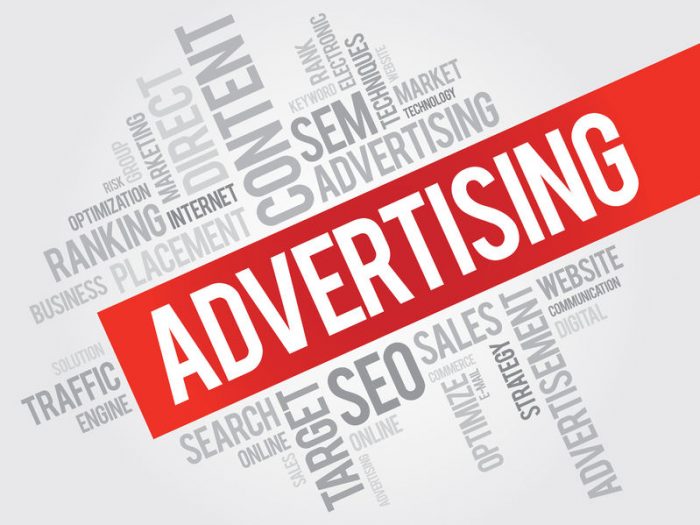When it comes to business advertising, most of the companies, big or small, face certain challenges. “How to advertise my product?”, “Whom should I advertise?”, “When is the best time and what is the best place to advertise?”- are just a few questions that have to be answered. Since there was a significant shift away from traditional advertising to digital, the face of marketing has been changed remarkably. Corporations and international companies invest millions of dollars in brand-new marketing campaigns. Meanwhile, smaller companies strive to find out what marketing strategy would work best in this ever-changing digital world.
Keeping a tight budget or flat out not having it, smaller companies try to find out cost-effective yet efficient solutions to promote their products and services. Knowing their pain, we came up with a list of advertising strategies for a small business:

Strategy #1: Concentrate on sales, rather than on brand recognition
Large companies make up their advertising strategy with the intention of building a brand awareness, rather than expecting an immediate return on investment from sales. They advertise at scale and focus on the future benefits. Small business owners had better concentrate on generating immediate sales, using a push marketing technique. This marketing strategy doesn’t simply building relationships with customers or retaining them, it is more about attracting as much attention as possible and creating an instant customer demand.
Ideas for “push advertising”: discounts or incentives, coupons, price reductions, seasonal sales, buy-one-get-one-free promotions, contests, point-of-purchase displays, loyalty programs, premium products or services, etc.
Strategy #2: Use integrated marketing tactics
There is no single, all-encompassing approach to marketing. With such abundance of information around, consumers hop from one channel to another throughout their shopping journey, looking for the best deal. Using multi-channel marketing strategy allows users to be exposed to advertiser’s products across platforms and devices. It is essential to use both online and offline marketing to get the most engagement.
Online audience engagement sources: company’s website, online reviews, social networks, blogs, search engine optimization, mail promotions, online webinars, etc.
Offline audience engagement sources: newspaper ads, classified ads, leaflets, in-person customer care, call center, social gatherings, etc.
Strategy #3: Trim your company’s website in terms of content and design
A website is certainly a face of the company. When a prospect hears about your product, guess what he is doing first. Right, checking it on Google. If you don’t have a website, you don’t have a face. And let’s agree, people like beautiful faces. When designing a website, think about content, overall design, navigation, and usability.
The website must have a responsive web design, easy-to-read, view and navigate on any and every device ranging from a computer desktop to a compact mobile phone. It is important to include an original, relevant and valuable content, which will make the website visible when using search engines. If done right, SEO (search engine optimization) could become the company’s major traffic source. Once you drive more traffic to your website, you will need to convert visitors into leads. Your message must be simple and concise, use effective calls to action, and encourage an instant reaction.
Strategy #4: Take advantage of social media
Most of the little companies struggle with social marketing since they are unsure of what type of content or messages they should post. In fact, social media marketing is possibly the most cost-effective way to spread the word about your business, if used wisely.
For instance, using a hashtag on Instagram is an excellent idea if you want to attract more local users, just tag your photo with #newyork if you have a business in New York. Alternatively, if you use Pinterest, simply indicate the location of your photos, and Pinterest will show them to people in your area first.
Create a Facebook page for company’s presentation, information about promotions and social buzz. Instagram might be a great way to promote a business using images and video ads. YouTube will aid in advertising products through tutorials and “how-to” videos. Twitter is useful for sharing content, increasing overall exposure, shaping a brand voice and spreading the news. LinkedIn will help in reaching out relevant professional audience, finding investors, business partners, and getting industry insights.
There are plenty other social media platforms like Pinterest, Snapchat, MeetUp, LiveJournal, Reddit, Tumblr, which can be used for indirect advertising. Every platform has its benefits, and creating a strategy using multiple platforms will increase the success of the ad campaign.
Strategy #5: Use Programmatic
SmartyAds programmatic ad tech company ensures that an advertising copy is displayed to the right person at the right time and context. It doesn’t matter anymore on which website the ad will appear: the system analyzes user’s cookies and chooses the most appropriate ad to display. Programmatically is all about “buying audience”, presenting the product to consumers who are most likely interested in it.
If the budget is limited, and you don’t have time to experiment, programmatic is a perfect solution. In traditional advertising, you would buy a bulk of impressions, but with programmatic, advertiser pays for each impression at a time, because the system automatically calculates the price of each impression. Hence, the automated ad buying is cheaper, but with greater value for the advertiser.
Strategy #6: Follow up: measure results of ad campaign
Those who complain that advertising doesn’t pay off, most likely neglected to measure those marketing efforts. It is ultimately important to know what works and what didn’t because this data would determine the future marketing strategy. Knowing “the good, the bad and the ugly” would help you to improve your product or service and eliminate flaws for the future.
If you are using a programmatic platform, you will have access to real-time analytics and granulated report via platform’s interface. To measure the success of online marketing efforts, use Google AdWords, Adobe Analytics or Facebook Insights.
For campaign measurement in digital advertising, gather the data about the number of times the ad was displayed, a number of people it was shown to, the total budget of the ad campaign, click-through-rate (CTR), engagement rate, conversion rate and other metrics.
In offline advertising, compare sales before, during and after an ad campaign, track retail traffic, check whether coupons and incentives were successful, etc.
Find a Home-Based Business to Start-Up >>> Hundreds of Business Listings.
















































